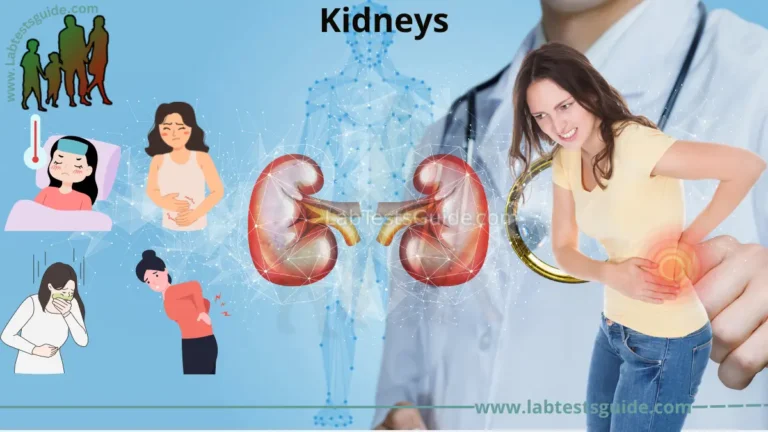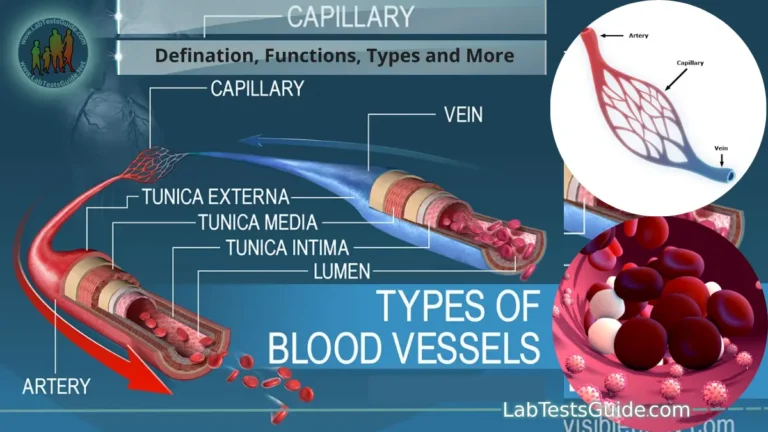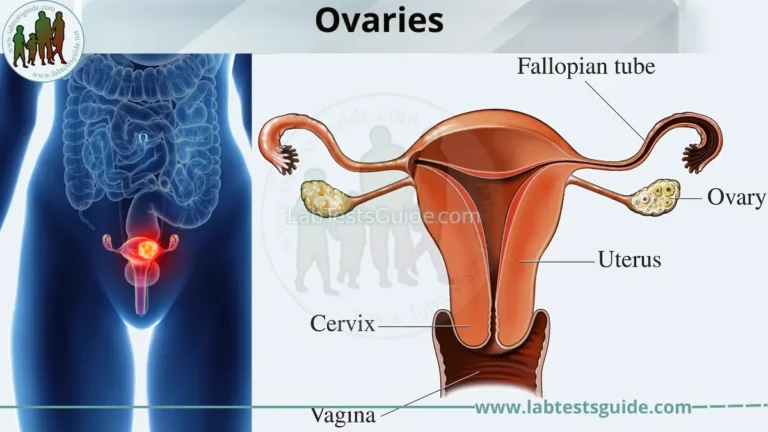The gallbladder is a small, pear-shaped organ located just below the liver in the upper right abdomen. Its main function is to store and release bile, a fluid produced by the liver that helps to digest fats in the small intestine. The gallbladder can become diseased or infected, leading to conditions such as gallstones or cholecystitis.

What is Gallblader ?
The gallbladder is a small organ located in the upper right part of the abdomen, just beneath the liver. Its main function is to store and concentrate bile, a greenish-yellow fluid produced by the liver that helps to digest fats in the small intestine.
When we eat, the gallbladder contracts and releases bile into the small intestine through a duct called the common bile duct. Bile helps to break down fats into smaller molecules that can be absorbed by the body. The gallbladder can hold about 50 milliliters of bile, and it usually releases the bile in response to the presence of fatty foods in the small intestine.
The gallbladder can sometimes develop problems, such as gallstones, which are hard deposits that form inside the gallbladder. Gallstones can cause pain and other symptoms, and may require treatment, such as surgery to remove the gallbladder. Other conditions that can affect the gallbladder include inflammation, infection, and cancer.
Functions of Gallbladder :
The gallbladder has several important functions, including:
- Storage of bile: The gallbladder stores bile that is produced by the liver until it is needed to aid in the digestion of fats.
- Concentration of bile: The gallbladder also concentrates bile by removing water and electrolytes from it, which makes it more effective in breaking down fats.
- Release of bile: When food enters the small intestine, the gallbladder releases bile into the duodenum through the common bile duct. This helps to emulsify fats, making it easier for enzymes to break them down and aid in their absorption.
- Regulation of bile flow: The gallbladder also helps to regulate the flow of bile into the small intestine. When there is a lot of fatty food to be digested, the gallbladder contracts and releases more bile. When there is no food in the small intestine, the gallbladder relaxes and less bile is released.
Overall, the gallbladder plays an important role in the digestive process, especially in the breakdown and absorption of fats.
Symptoms of Diseases of Gallbladder :
Some common symptoms of gallbladder disease include:
- Abdominal pain: Pain in the upper right side or middle of the abdomen is the most common symptom of gallbladder disease. The pain may be dull, sharp, or crampy, and it may come and go.
- Nausea and vomiting: Nausea and vomiting are common symptoms of gallbladder disease, particularly if the pain is severe.
- Jaundice: If a gallstone blocks the common bile duct, it can cause jaundice, which is a yellowing of the skin and eyes.
- Fever: Inflammation or infection of the gallbladder can cause fever.
- Bloating and gas: Some people with gallbladder disease may experience bloating and gas.
- Indigestion: Indigestion or an upset stomach can be a symptom of gallbladder disease, particularly if it occurs after eating a fatty meal.
- Itching: If a gallstone blocks the bile ducts, it can cause itching.
If you experience any of these symptoms, it’s important to see a healthcare provider for an accurate diagnosis and treatment.
Conditions of Gallbladder :
There are several conditions that can affect the gallbladder, including:
- Gallstones: These are hard, pebble-like deposits that can form in the gallbladder. Gallstones can cause pain, inflammation, and other symptoms, and may require treatment such as surgery to remove the gallbladder.
- Cholecystitis: This is inflammation of the gallbladder, often caused by gallstones. Symptoms can include pain, fever, and nausea and vomiting.
- Choledocholithiasis: This is a condition where a gallstone becomes lodged in the common bile duct, causing pain, jaundice, and other symptoms.
- Gallbladder cancer: This is a rare but serious form of cancer that can develop in the gallbladder.
- Biliary dyskinesia: This is a condition where the gallbladder does not contract and release bile properly, leading to symptoms such as abdominal pain, nausea, and bloating.
- Sphincter of Oddi dysfunction: This is a condition where the muscle that controls the flow of bile and pancreatic juice into the small intestine does not function properly, leading to abdominal pain and other symptoms.
- Gallbladder polyps: These are growths that can develop on the gallbladder wall. Most gallbladder polyps are benign, but in rare cases they can become cancerous.
It’s important to see a healthcare provider if you experience any symptoms related to the gallbladder, as prompt diagnosis and treatment can help to prevent complications.
Diagnoses of Gallbladder Issues :
To diagnose gallbladder issues, a healthcare provider may perform the following tests:
- Physical exam: The healthcare provider will examine your abdomen to check for tenderness or swelling.
- Blood tests: Blood tests can help to identify signs of inflammation, infection, or jaundice.
- Imaging tests: Imaging tests such as ultrasound, CT scan, or MRI can help to visualize the gallbladder and identify any abnormalities such as gallstones or inflammation.
- Endoscopic retrograde cholangiopancreatography (ERCP): This test involves using a thin, flexible tube with a camera at the end to examine the bile ducts and the pancreas.
- Cholescintigraphy (HIDA scan): This test uses a radioactive tracer to create images of the gallbladder and track the flow of bile.
- Endoscopic ultrasound (EUS): This test uses a special ultrasound probe to create detailed images of the gallbladder and surrounding structures.
Based on the results of these tests, your healthcare provider can determine the cause of your symptoms and develop an appropriate treatment plan.
Risk Factors of Gallbladder:
There are several risk factors that can increase the likelihood of developing gallbladder problems, including:
- Age: Gallbladder disease is more common in people over the age of 60.
- Gender: Women are more likely than men to develop gallbladder problems, possibly due to the effects of estrogen.
- Genetics: A family history of gallstones or gallbladder disease can increase the risk of developing these conditions.
- Obesity: Obesity is a major risk factor for gallbladder disease, as excess body fat can increase cholesterol levels and lead to the formation of gallstones.
- Rapid weight loss: Losing weight too quickly, especially through crash diets or weight loss surgery, can increase the risk of developing gallstones.
- Diabetes: People with diabetes are at increased risk of developing gallstones and other gallbladder problems.
- Certain medications: Some medications, such as cholesterol-lowering drugs, can increase the risk of developing gallstones.
- Sedentary lifestyle: Lack of physical activity can increase the risk of gallbladder disease.
It’s important to maintain a healthy lifestyle, including a balanced diet and regular exercise, to help reduce the risk of developing gallbladder problems.
Preventions:
There are several steps you can take to help prevent gallbladder problems:
- Maintain a healthy weight: Being overweight or obese increases the risk of developing gallstones and other gallbladder problems. Aim to maintain a healthy weight through a balanced diet and regular exercise.
- Eat a healthy diet: A diet high in fiber and low in fat can help prevent gallstones. Avoiding or limiting high-fat, fried, and processed foods may also help reduce the risk of gallbladder problems.
- Stay hydrated: Drinking plenty of water and other fluids can help prevent the formation of gallstones.
- Exercise regularly: Regular physical activity can help maintain a healthy weight and reduce the risk of gallbladder disease.
- Avoid crash diets: Rapid weight loss, especially through crash diets or weight loss surgery, can increase the risk of developing gallstones.
- Manage chronic conditions: If you have diabetes or other chronic conditions, it’s important to manage them properly to help prevent gallbladder problems.
- Talk to your healthcare provider about medications: Some medications, such as cholesterol-lowering drugs, can increase the risk of developing gallstones. If you are taking any medications, talk to your healthcare provider about the potential risks and how to manage them.
- Quit smoking: Smoking is a risk factor for many health problems, including gallbladder disease. Quitting smoking can help reduce the risk of gallbladder problems and improve overall health.
It’s important to talk to your healthcare provider if you have any concerns about your risk of developing gallbladder problems, as they can provide personalized recommendations based on your individual health history and risk factors.
FAQs (frequently asked questions):
What is the function of the gallbladder?
The function of the gallbladder is to store and release bile, which is a digestive fluid that helps to break down fats in the small intestine.
Can you live without gallbladder?
Yes, it is possible to live without a gallbladder. The liver continues to produce bile, which flows directly into the small intestine after the gallbladder is removed. However, some people may experience changes in digestion and bowel movements after gallbladder removal, and may need to make dietary adjustments to manage these symptoms.
What are the first signs of a bad gallbladder?
The first signs of a bad gallbladder may include abdominal pain, particularly in the upper right portion of the abdomen, nausea and vomiting, bloating, and indigestion. Other symptoms may include fever, chills, and jaundice, depending on the underlying condition affecting the gallbladder.
What causes gallbladder problems?
Gallbladder problems can be caused by a variety of factors, including the formation of gallstones, inflammation of the gallbladder (cholecystitis), biliary dyskinesia (a condition where the gallbladder doesn’t empty properly), tumors or cancer of the gallbladder, and other underlying medical conditions such as liver disease, pancreatitis, or infections.
What are 3 symptoms of gallbladder disease?
Three symptoms of gallbladder disease are abdominal pain, nausea and vomiting, and bloating. Other symptoms may include indigestion, fever, chills, jaundice, and changes in bowel movements.
What foods affect the gallbladder?
Foods that are high in fat, cholesterol, and processed or fried foods can affect the gallbladder and increase the risk of gallbladder problems. Some specific foods that may affect the gallbladder include fatty meats, dairy products, eggs, fried foods, processed snacks and sweets, and foods with high levels of refined carbohydrates. Eating a healthy diet that is high in fiber and low in fat can help prevent gallbladder problems.
What are 3 treatments for gallstones?
Three treatments for gallstones are:
- Surgery: Surgical removal of the gallbladder, called cholecystectomy, is the most common treatment for gallstones.
- Medications: Certain medications, such as bile acid pills or oral dissolution therapy, may help dissolve small gallstones or prevent new ones from forming.
- Shock wave lithotripsy: This treatment uses sound waves to break up gallstones into smaller pieces that can be passed out of the body through urine. However, this treatment is less commonly used than surgery or medications.
Which foods cause gallstones?
Foods that are high in fat and cholesterol, such as fatty meats, fried foods, processed snacks and sweets, and dairy products, can contribute to the formation of gallstones. High intake of refined carbohydrates, sugar, and alcohol may also increase the risk of developing gallstones. Eating a healthy diet that is high in fiber and low in fat may help reduce the risk of gallstones.
How can I save my gallbladder naturally?
There are several natural ways to help support and protect the health of the gallbladder. These include:
- Eating a healthy diet that is low in fat and high in fiber.
- Staying hydrated by drinking plenty of water and fluids.
- Maintaining a healthy weight and avoiding crash diets.
- Exercising regularly to support overall health and reduce the risk of gallbladder problems.
- Avoiding smoking and excessive alcohol consumption.
- Trying natural remedies such as apple cider vinegar or dandelion root tea, although their effectiveness is not scientifically proven.
- Seeking medical attention if experiencing any symptoms of gallbladder problems.
Is gallbladder removal serious?
Gallbladder removal is generally considered a safe and routine procedure, and serious complications are rare. However, as with any surgery, there are some risks involved, such as bleeding, infection, injury to nearby organs, and anesthesia-related complications. After the surgery, some people may experience changes in digestion and bowel movements, but these symptoms usually improve over time. Overall, gallbladder removal is a commonly performed and generally safe procedure.
Is gallbladder removal a major surgery?
Gallbladder removal, also known as cholecystectomy, is a common surgical procedure that is usually performed using minimally invasive techniques such as laparoscopy. In most cases, it is considered a minor or moderate surgery, and patients can often go home the same day or within a few days of the procedure. However, in some cases where the gallbladder is severely inflamed or infected, an open surgery may be required, which is a more invasive procedure that involves a larger incision and a longer recovery time. Overall, the type of surgery needed will depend on the individual case and the severity of the condition.
What foods to avoid if you dont have a gallbladder?
After gallbladder removal, it is recommended to avoid certain foods that may be difficult to digest, such as:
- High-fat foods, such as fatty meats, fried foods, and high-fat dairy products.
- Spicy or heavily seasoned foods.
- Foods high in refined carbohydrates, such as white bread, pasta, and sugary snacks.
- Gas-producing foods, such as beans, cabbage, onions, and broccoli.
- Large meals or meals high in calories.
Are bananas good for gallbladder?
Yes, bananas are considered to be a good food choice for the gallbladder because they are low in fat and high in fiber. They are also a good source of potassium, which may help regulate blood pressure and support overall heart health. Bananas are easy to digest and are unlikely to cause digestive symptoms after gallbladder removal.
What are the side effects of gallbladder removal?
Some of the common side effects of gallbladder removal, also known as cholecystectomy, may include:
- Pain and discomfort in the abdomen or at the site of the incisions.
- Nausea and vomiting.
- Diarrhea or changes in bowel movements.
- Bloating and gas.
- Digestive problems, such as indigestion or heartburn.
- Difficulty digesting fatty or greasy foods.
- Fatigue or weakness.
These side effects are usually temporary and should improve within a few weeks after the surgery. However, some people may experience long-term digestive problems or other complications. It is important to follow your doctor’s instructions and to seek medical attention if you experience any severe or persistent symptoms after gallbladder removal.
How big is gallbladder?
The gallbladder is a small, pear-shaped organ located on the right side of the abdomen, beneath the liver. It typically measures about 3 to 4 inches (7.6 to 10.2 centimeters) in length and about 1 inch (2.5 centimeters) in diameter at its widest point. The size and shape of the gallbladder can vary slightly from person to person.
Conclusion:
In conclusion, the gallbladder is a small, pear-shaped organ that plays an important role in digestion by storing and releasing bile, a fluid that helps the body digest fats. Gallbladder problems can cause a range of symptoms, including abdominal pain, nausea, and digestive problems. Gallstones are a common condition that can cause gallbladder problems, and treatment may involve medications, dietary changes, or surgery to remove the gallbladder. After gallbladder removal, it is important to follow a healthy diet and lifestyle to support digestive health and overall well-being.
Possible References Used







